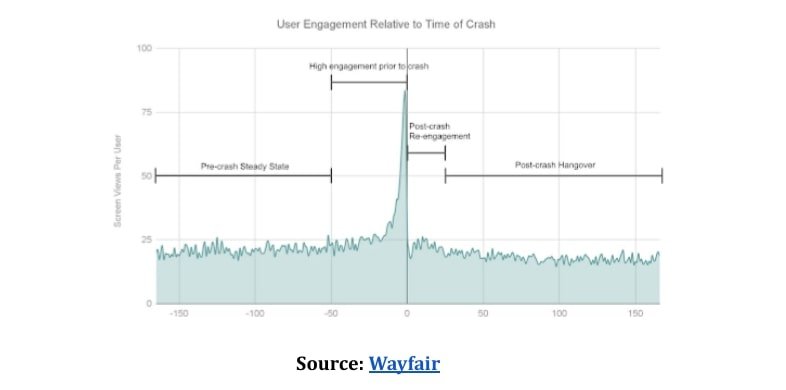It’s an axiom of software development that Quality Assurance (QA) is crucial for building good-quality applications. It helps identify bugs that could impact the application’s performance and ensures they’re resolved before the application is launched.
But while QA is still relevant, today’s business landscape requires enterprises to think beyond it. Rapid digital transformation and continuous iterations and development have pressured the QA team to speed up testing and adapt to the short timelines. There is less attention paid than should be to crucial aspects that impact application performance, speed, scalability, and availability. This could potentially compromise the customer experience through poor application quality and performance, and enterprises cannot afford that. 70% of customers will uninstall an app if it takes too long to load. According to Wayfair, frequent mobile crashes lead to an 89% loss in revenue per user.

Additionally, traditional QA methods are limited to checking the software’s quality and performance. They do not take a holistic approach to reviewing the application from all aspects, like performance, functionality, and security.
Hence, enterprises must move towards a more holistic and modernised way of testing and maintaining the application’s performance. They must embrace digital quality assurance and engineering approaches.
Digital Quality Assurance and Engineering and Its Benefits
Digital quality assurance and engineering is an engineering approach that combines speed, quality, and intelligence to improve the application’s quality, security, and overall performance. The ultimate goal is to ensure product reliability and better user experience. Since it’s an integral part of the software development lifecycle, the team can quickly identify and rectify bugs.
Here are a few benefits of using this approach:-
Improves User Experience
Application performance monitoring combined with continuous testing optimises the application’s performance, reliability, and scalability and maintains its quality standards. This eventually shows results as it provides a seamless experience to customers at all times.
Accelerates Go-to-Market Delivery
Since it involves continuous testing at all stages of software development, the QA team doesn’t have to wait till the application is fully ready for testing. This helps in identifying and rectifying defects on time and ensuring timely delivery.
Minimises Downtime and Expenses
Unplanned application downtime negatively impacts the enterprise’s reputation and revenue. Over 60% of outages cost over $100,000 loss to enterprises. Digital quality assurance and engineering keep the application up and running at all times, irrespective of peak traffic and other factors. This helps enterprises to forecast application failure in advance and save the enterprise from losing revenue.
How Is Digital Quality Assurance and Engineering Different from QA?
By now, you already know that digital quality assurance and engineering is a more continuous and holistic approach than usual QA. But here are a few other factors that make digital quality assurance and engineering different from QA.
Objective
QA is primarily focused on detecting defects. Digital quality assurance and engineering is more comprehensive and focuses on improving application performance, usability, scalability, and security.
Approach
QA follows a reactive approach of detecting and fixing bugs after the development is complete. Digital quality assurance and engineering use a proactive approach of integrating quality by design at all development stages. Every stage of development involves design reviews, requirement analysis, and risk assessment. Hence, there are fewer chances of finding defects after development.
Collaboration
In traditional QA, development and testing are separate processes. This creates silos in functioning and delays testing and go-to-market. Since digital quality assurance and engineering have been baked into the development process since the beginning, the developers and QA team work collaboratively as a single unit. This creates a shared commitment to quality where every team works to improve the application’s performance and user experience, accelerating the go-to-market.
How Does Digital Quality Assurance and Engineering Impact Application Performance?
Since it involves holistic and proactive testing, the QA team can detect the bottlenecks, determine an application’s maximum threshold, improve responsiveness, and always keep it scalable. It enables the application to manage increasing user loads without downtime or compromise on performance.
The QA team can also find out how the application responds to specific conditions and fine-tune it to deliver a smooth experience to customers. Ultimately, digital quality assurance and engineering aims to augment the development and testing process and contribute to building a robust, scalable, secure application that provides a competitive advantage to the enterprise.
The Ultimate Digital Quality Assurance and Engineering Solution
As enterprises adapt to the agile business landscape and embrace digital transformation and modern delivery models, they cannot afford to follow the traditional QA processes. Customers expect a seamless user experience across all channels and devices. They also expect continuous improvement from applications. The only way enterprises can strike a balance between customer expectations and build a scalable, secure, and available application is by adopting digital quality assurance and engineering.
However, to implement digital quality assurance and engineering, the QA teams need technologies and solutions that can aid them in:-
• Addressing the concerns at all application development stages
• Predicting failures in advance
• Taking preventive measures to improve the application’s performance, availability, scalability, and security
At Avekshaa, we understand the urgent need for such a solution and have, thus, built a core technology platform called P-A-S-S™ Assurance Platform. The P-A-S-S™ Assurance Platform supports the QA team across all phases of the application lifecycle, including development, maintenance, and production.
Built on Avekshaa’s core IPs, proven methodologies, use cases, and real-world scenarios, the P-A-S-S™ Assurance Platform uses a data-driven approach to analyse and isolate issues across the technology stack and resolve them on time to deliver consistent results.
To know more about the platform, contact us.


